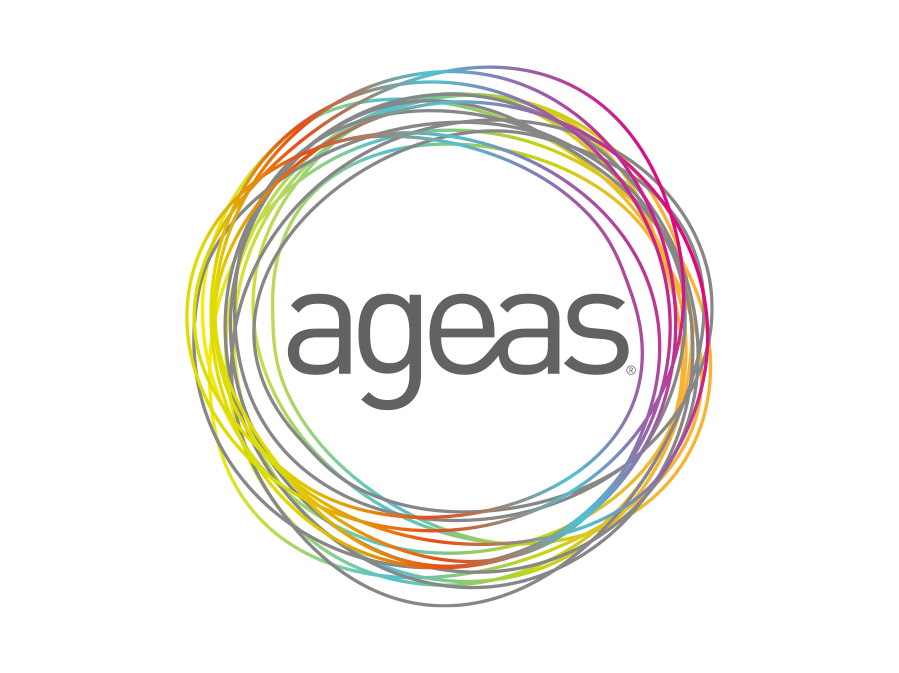Best Life Insurance Options After a Stroke UK

Experiencing a stroke is a life-altering event. Amid the focus on recovery and adjusting to a new normal, thinking about financial planning and life insurance might feel overwhelming. You may be wondering if cover is even possible, what it might cost, and where to begin.
The good news is that securing life insurance after a stroke is often achievable. However, the journey is different from a standard application. Insurers will view your application through a lens of increased risk, which means the process requires more detail, patience, and expert guidance.
This definitive guide is designed to walk you through everything you need to know. We’ll explore the types of questions insurers will ask, the medical evidence you'll need, the potential outcomes, and, most importantly, the practical steps you can take to secure the best possible terms for you and your family.
What to expect on price, medical evidence and exclusions — and how to improve outcomes
Navigating a life insurance application after a stroke means setting realistic expectations. Insurers need to carefully assess the long-term risk, and their decision will be based on a detailed picture of your health, both past and present. Here’s a top-level overview of what to anticipate.
-
Price (Premiums): It's almost certain that your premiums will be higher than for someone of the same age with no history of stroke. Insurers apply what's known as a 'premium loading'—an additional percentage on top of the standard price—to reflect the increased risk. The size of this loading can vary dramatically, from as little as +50% to over +200%, depending on the specifics of your case.
-
Medical Evidence: A standard application is not enough. You must be prepared to provide comprehensive medical details. All insurers will request your full medical records from your GP. This is called a General Practitioner's Report (GPR). In some cases, especially for larger cover amounts, they may also require a nurse medical screening or an examination with a doctor. This is a normal part of the process for what is known as an 'impaired lives' application.
-
Exclusions: For a standard life insurance policy (which pays out on death), exclusions are rare. An insurer will either offer cover (at a loaded price) or decline. However, if you are applying for Critical Illness Cover or Income Protection, it is highly likely you will be offered a policy with a "cardiovascular exclusion." This means the policy would not pay out for a future stroke, heart attack, or other related conditions, but would still cover you for events like cancer or multiple sclerosis.
-
Improving Outcomes: You are not just a passive applicant. The actions you take have a direct impact on the insurer's decision. Demonstrating a stable recovery, diligent management of underlying conditions (like blood pressure), and positive lifestyle changes (like quitting smoking) can significantly improve your chances of being accepted and reduce the premium loading.
Understanding Why a Stroke Impacts Your Life Insurance Application
From an insurer's perspective, every application is about risk assessment. Their business model relies on accurately pricing the statistical likelihood of a claim being made during the policy term. A stroke is a significant cardiovascular event that, according to medical data, increases a person's risk of mortality and further health complications.
To put this into context, the Stroke Association reports that there are over 100,000 strokes in the UK each year. It is a leading cause of disability and a major health concern. This statistical reality is why underwriters—the people who assess risk for insurance companies—must take a history of stroke so seriously.
Insurers will want to understand the specific type of event you had:
- Ischaemic Stroke: This is the most common type, accounting for around 85% of all cases in the UK. It happens when a blood clot blocks an artery that supplies blood to the brain.
- Haemorrhagic Stroke: This is less common but often more serious. It's caused by a bleed in or around the brain.
- Transient Ischaemic Attack (TIA): Often called a 'mini-stroke', a TIA is a temporary disruption of blood flow to the brain. The symptoms are the same as a stroke but are temporary. While less severe, a TIA is a major warning sign that you are at high risk of a full stroke, and insurers treat it as such.
An underwriter's primary goal is to determine if the stroke was a one-off event with well-managed causes, or if it indicates a high probability of recurrence or other cardiovascular problems. The more information they have to build a complete picture, the more accurately they can price the risk—and the more likely they are to offer cover.
The Key Questions Insurers Will Ask After a Stroke
When you apply for life insurance, you (with the help of your GP report) will need to provide answers to a specific set of questions. Your responses will be the single most important factor in the underwriting decision. Be prepared to provide details on the following:
1. When did the stroke or TIA occur? This is a critical starting point. The longer the time that has passed since the event, the better. Most insurers have a 'postponement period' and will not even consider an application for at least 6 to 12 months after a stroke. A longer period (e.g., 3, 5, or 10 years) with no further incidents demonstrates stability and significantly improves your chances.
2. What type of event was it? Was it an Ischaemic Stroke, a Haemorrhagic Stroke, or a Transient Ischaemic Attack (TIA)? A single TIA with full recovery will be viewed much more favourably than a severe haemorrhagic stroke.
3. How old were you when it happened? Unfortunately, a stroke at a younger age (e.g., under 45) can be seen as a higher risk factor by underwriters, as it may suggest a more serious underlying predisposition.
4. What was the severity and were there any lasting effects? Insurers need to know the extent of the damage. Be prepared to answer questions like:
- Did you make a full recovery?
- Do you have any residual weakness, paralysis, or mobility issues?
- Are there any lasting effects on your speech, vision, or cognitive function?
- Can you live independently and perform daily activities?
A full and swift recovery with no lasting neurological deficit is the best-case scenario.
5. Was it a single event or have you had multiple strokes/TIAs? A single, isolated event is viewed far more favourably than a history of multiple strokes or numerous TIAs. Recurrent events signal an unstable and high-risk condition.
6. What were the identified underlying causes? A stroke doesn't happen in a vacuum. Underwriters will want to know why it happened and how those causes are being managed. Common contributing factors include:
- High Blood Pressure (Hypertension)
- Atrial Fibrillation (an irregular heartbeat)
- High Cholesterol
- Diabetes
- Smoking
- Being overweight
7. What investigations and treatments have you had? This includes details of hospital stays, scans (CT/MRI), and any surgical procedures like a carotid endarterectomy. They will also need a full list of your current medications, such as statins, blood pressure tablets (e.g., Ramipril), or blood thinners (e.g., Apixaban, Clopidogrel, Warfarin).
8. What are your recent medical readings? Your most recent blood pressure and cholesterol readings are vital. Consistently good readings, controlled with or without medication, are a huge positive.
9. What lifestyle changes have you made? This is your opportunity to show you are proactive about your health. Have you quit smoking, lost weight, improved your diet, or started a regular exercise programme (as approved by your doctor)? Positive lifestyle changes are viewed very favourably.
A Closer Look at Medical Evidence: The GP Report and Beyond
For anyone applying for life insurance with a history of a stroke, requesting medical evidence is not optional; it is a mandatory part of the process. This shouldn't be a cause for concern—it’s simply how insurers gather the factual information they need to make a fair decision.
The primary tool for this is the General Practitioner's Report (GPR). When you sign the insurance application form, you give the insurer permission to write to your GP surgery to request a report on your medical history.
What does a GPR contain? The GPR is a factual summary compiled by your doctor or the practice administrator. It will include:
- Confirmation of the date and type of your stroke/TIA.
- Details of hospital admission and discharge summaries.
- Results from investigations like brain scans, heart scans (echocardiograms), and blood tests.
- A history of your blood pressure and cholesterol readings.
- A list of all your current and past prescribed medications.
- Notes on any other significant health conditions.
- Lifestyle information noted in your records, such as your smoking status and BMI.
The insurer pays the GP's surgery for the cost of producing this report. It’s crucial to understand that complete honesty on your application form is non-negotiable. The GPR will verify everything you have declared. Any discrepancies or non-disclosures could lead to your application being declined, or worse, a future claim being rejected, leaving your family with nothing.
Will I need a separate medical examination? In most cases, a GPR provides enough information. However, an insurer may request a nurse screening or a full medical exam if:
- You are applying for a very large amount of cover (e.g., over £1 million).
- Your medical history is particularly complex.
- Your GP's records are incomplete or unclear on certain points.
If required, the insurer will arrange and pay for this. It usually involves a nurse visiting you at home to check your height, weight, blood pressure, and take a urine sample. It is a straightforward process designed to give the underwriter the most up-to-date information.
Potential Outcomes of Your Application: A Realistic Guide
Once the underwriter has reviewed your application form and medical evidence, they will make a decision. After a stroke, there are four main potential outcomes. It is very unlikely you will be offered cover at standard rates.
The table below summarises what you can realistically expect.
| Insurer's Decision | What it Means in Practice | Common Scenarios for a Stroke Survivor |
|---|---|---|
| Rated Premiums (Loading) | Your premium is increased by a set percentage (e.g., +50%, +100%, +150%). This is the most common positive outcome. | A single stroke/TIA several years ago, full recovery, well-managed blood pressure, non-smoker. The size of the loading depends on severity and time. |
| Postponement | The insurer will not offer cover now but invites you to re-apply after a set period, typically 6, 12, or 24 months. | The stroke occurred recently (less than a year ago). Your condition is not yet considered stable, or you are still undergoing treatment adjustments. |
| Decline | The insurer assesses the risk as too high and is unable to offer you a policy at this time. | A severe stroke with significant lasting effects (e.g., paralysis), multiple strokes, uncontrolled underlying conditions, or a recent event. |
| Standard Rates | You pay the standard, non-loaded premium for your age. | Extremely rare. Only possible for a very minor TIA that happened many years ago (e.g., 10+), with no lasting issues and an otherwise perfect health profile. |
A 'decline' from one insurer is not the end of the road. Different companies have different underwriting philosophies. One insurer might decline an application that another would accept with a loading. This is why the guidance of an expert broker is invaluable.
Exploring Your Protection Options After a Stroke
While a stroke can make securing cover more challenging, several types of protection are still worth exploring. The key is to match the right product to your needs and what is realistically available.
Life Insurance (Term Assurance)
This is the most straightforward and most likely policy to be approved after a stroke. It pays out a lump sum if you pass away within a set term.
- Level Term Assurance: The payout amount remains the same throughout the policy. Ideal for providing a family protection lump sum or clearing an interest-only mortgage.
- Decreasing Term Assurance: The payout amount reduces over time, broadly in line with a repayment mortgage. This makes it a cheaper option, specifically for mortgage protection.
Family Income Benefit
This is a variation of term life insurance. Instead of a single lump sum, it pays out a regular, tax-free monthly or annual income to your family from the point of claim until the end of the policy term. This can be a more affordable and manageable way to replace your lost income, helping your family to cover regular bills and living costs. Underwriting is the same as for standard life insurance.
Critical Illness Cover (CIC)
This cover pays out a tax-free lump sum if you are diagnosed with one of a list of specific serious illnesses, such as cancer, heart attack, or multiple sclerosis.
- Availability: Getting new Critical Illness Cover after a stroke is very difficult.
- Likely Outcome: Most applications will either be declined or offered with a cardiovascular exclusion. This means the policy would not pay out for another stroke, a heart attack, or any related heart/circulatory condition.
- Is it still worthwhile? Potentially, yes. An excluded policy would still provide comprehensive cover for cancer, which accounts for the majority of CIC claims in the UK. You must weigh the cost against the value of this partial cover.
Income Protection (IP)
This is arguably the most important policy for any working adult, as it replaces a portion of your salary if you are unable to work due to any illness or injury.
- Availability: Similar to CIC, obtaining new Income Protection after a stroke is extremely challenging.
- Likely Outcome: Many insurers will decline to offer cover. Those that do will almost certainly apply a cardiovascular exclusion.
- Worth Exploring: Despite the difficulty, it is always worth investigating with a specialist broker. Even a policy with an exclusion provides invaluable protection if you are unable to work due to cancer, a musculoskeletal issue, or a mental health condition.
Over 50s Life Insurance
This is a type of whole-of-life policy that offers guaranteed acceptance with no medical questions for UK residents aged 50-85.
- The Catch: These policies have an initial waiting period, typically 12 or 24 months. If you die from natural causes (including a stroke-related issue) during this period, the policy will not pay the full lump sum. Instead, it will simply refund the premiums you have paid. Death by accident is usually covered from day one.
- Its Role: This can be a good option for those declined for underwritten life insurance, or for those who simply want a guaranteed sum to cover funeral costs without the hassle of a medical application.
Special Considerations for Business Owners and the Self-Employed
If you run your own business or are self-employed, the financial consequences of a serious health event like a stroke can be particularly acute. Standard sick pay is non-existent, and the stability of your business could be at risk.
For Company Directors
If you are a director of your own limited company, there are tax-efficient ways to arrange protection that can be hugely beneficial.
-
Relevant Person Cover (formerly Key Person Insurance): This is a life insurance or critical illness policy taken out and paid for by the business, on the life of a 'key' individual—like a founder or top salesperson. If that person passes away or suffers a critical illness, the payout goes directly to the business. This cash injection can help cover lost profits, recruit a replacement, or clear business loans. The application is underwritten based on the individual's health, so a history of stroke will lead to rated premiums, but it remains a vital tool for business continuity.
-
Executive Income Protection: This is an income protection policy owned and paid for by your limited company, for your benefit as an employee/director. The key advantage is that the premiums are typically treated as an allowable business expense, making it a highly tax-efficient way to secure an income if you're unable to work. While the underwriting challenges after a stroke remain, the tax advantages can make even a rated or excluded policy more affordable and worthwhile.
For the Self-Employed and Freelancers
For sole traders and freelancers, the lack of an employer safety net makes personal protection essential.
- Income Protection is Key: The risk of being unable to earn an income is your biggest financial vulnerability. As discussed, getting a full IP policy after a stroke is tough. However, working with a specialist broker to find a provider willing to offer cover, even with an exclusion, is a top priority.
- Consider Personal Sick Pay Policies: Some insurers offer simpler, shorter-term sick pay plans. These are often easier to qualify for than long-term income protection. They might pay out for a maximum of 12 months, but this can provide a crucial buffer to keep you afloat during a period of illness.
- Don't Forget Life Cover: Protecting your family with a personal life insurance or family income benefit policy ensures that your personal liabilities, like a mortgage and family living costs, are covered no matter what.
How to Improve Your Chances and Get the Best Price
While you can't change the fact that you've had a stroke, you have significant power to influence the outcome of your insurance application. Here are the most effective steps you can take.
1. Don't Apply Immediately Patience is a virtue. Insurers need to see stability. Wait at least one year after your stroke before applying. This allows time for your condition to stabilise, for treatments to be optimised, and for you to establish a track record of recovery.
2. Control What You Can Control This is the most critical part of your preparation. You need to present the best possible version of your current health to the underwriter.
- Quit Smoking: If you are a smoker, quitting is the single most impactful action you can take. A non-smoker who has had a stroke will get far better terms than a smoker in the same position.
- Manage Your Health Metrics: Work with your GP to get your blood pressure and cholesterol levels into the healthy range. Take your medication exactly as prescribed and attend all your follow-up appointments.
- Maintain a Healthy Diet and Weight: Losing excess weight reduces strain on your cardiovascular system and lowers blood pressure. A healthy, balanced diet is key. To support our clients on their health journey, we at WeCovr provide complimentary access to our AI-powered calorie and nutrition tracking app, CalorieHero, helping you make informed choices every day.
- Exercise Regularly: Follow your doctor's advice on a safe and effective exercise routine.
- Reduce Alcohol Intake: Stick within the NHS recommended limits for alcohol consumption.
3. Be Prepared with Your Information Before you even speak to a broker, gather all the key details about your stroke: the date, the type, the hospital you were in, your current medications, and your latest BP/cholesterol readings. Having this to hand makes the process smoother and faster.
4. Do NOT Use a Standard Price Comparison Website This is a common mistake. Automated comparison sites are designed for people with clean health records. Your application requires nuance and expert handling. Submitting your details to these sites will often result in automatic declines or wildly inaccurate quotes, and can leave a negative footprint on your application history.
5. Use an Expert Insurance Broker This is the most important step of all. A specialist protection broker, like the team at WeCovr, is your advocate in the insurance market.
- Market Knowledge: We know which insurers have a more favourable or experienced approach to underwriting applications from stroke survivors.
- Pre-Application Enquiries: We can speak to underwriters on an anonymous basis before submitting a formal application. We present the facts of your case and get an indicative decision. This avoids having a 'decline' registered against your name, which can prejudice future applications.
- Application Support: We will help you frame your application in the best possible light, ensuring all the positive factors—your lifestyle changes, your well-managed health—are clearly highlighted.
- Finding the Best Terms: Our job is to scour the entire market to find the company that will offer you the right cover on the very best terms possible.
Working with an expert transforms the process from a daunting solo effort into a guided, strategic partnership.
Real-Life Scenarios: How an Application Might Play Out
To bring this all to life, here are a few examples of how different post-stroke applications might be assessed.
Case Study 1: The Favourable Outcome
- Client: Mark, aged 58. He had a single, minor TIA six years ago with no lasting symptoms.
- Health Profile: He quit smoking immediately after the TIA. His BMI is healthy, and his blood pressure is perfectly controlled with a small dose of Ramipril. He exercises three times a week.
- Application: Applied for £150,000 of level term life insurance to protect his family.
- Outcome: After reviewing his GP report which confirmed his excellent health management, the insurer accepted his application with a +75% premium loading. Mark was delighted to get the cover in place at a price he could afford.
Case Study 2: The Postponement
- Client: Susan, aged 45. She had a moderate ischaemic stroke just ten months ago.
- Health Profile: Her recovery is going well, but she still has some minor numbness in her left hand, and her doctors are still adjusting her blood pressure medication to find the optimal dose.
- Application: Applied for Income Protection through an expert broker.
- Outcome: The broker made an anonymous enquiry to several insurers. The consensus was to postpone the decision for 12 months. The underwriters want to see a longer period of stability and evidence that her condition and medication are settled before they can offer terms. The broker has scheduled a review with Susan in a year's time.
Case Study 3: The Complex Case
- Client: Brian, aged 62. He has a 20-a-day smoking habit and had a significant stroke three years ago which has left him with a slight limp.
- Health Profile: His blood pressure remains high despite medication, and his medical records note that he has been inconsistent with follow-up appointments.
- Application: He applied for combined Life and Critical Illness Cover via a comparison website and was declined. He then approached WeCovr for help.
- Outcome: Our advisers explained that CIC was not going to be possible. We approached a specialist insurer for life cover only. Due to the multiple high-risk factors (smoking, lasting effects, high BP), the best terms available were a life insurance policy with a +200% premium loading. Brian found this unaffordable. As an alternative, we arranged an Over 50s Guaranteed Acceptance Plan for him. This provides a smaller, but guaranteed, sum to cover his funeral costs, giving him and his family valuable peace of mind.
Recovering from a stroke involves rebuilding your health, confidence, and future. Securing the right financial protection is a vital part of that process. While the path to getting life insurance is more detailed, it is far from impossible.
By taking control of your health, being patient, and partnering with an expert adviser who can champion your case, you can navigate the market successfully. You can secure the peace of mind that comes from knowing your loved ones will be financially protected, allowing you to focus on what truly matters: your health and your future.
Do I need to declare a TIA or 'mini-stroke' on my application?
Will my life insurance premiums ever go down if my health improves?
What if I'm declined by one insurer?
Is Over 50s life insurance a good option after a stroke?
Can I get life insurance if I had a stroke a very long time ago?
Why life insurance and how does it work?
What is Life Insurance?
Life insurance is an insurance policy that can provide financial support for your loved ones when you or your joint policy holder passes away. It can help clear any outstanding debts, such as a mortgage, and cover your family's living and other expenses such costs of education, so your family can continue to pay bills and living expenses. In addition to life insurance, insurance providers offer related products such as income protection and critical illness, which we will touch upon below.How does it work?
Life insurance pays out if you die. The payout can be in the form of a lump sum payment or can be paid as a replacement for a regular income. It's your decision how much cover you'd like to take based on your financial resources and how much you'd like to leave to your family to help them deal with any outstanding debts and living expenses. Your premium depends on a number of factors, including your occupation, health and other criteria.The payout amount can change over time or can be fixed. A level term or whole of life policy offers a fixed payout. A decreasing term policy offers a payout that decreases over the term of the cover.
With critical illness policies, a payout is made if you’re diagnosed with a terminal illness with a remaining life expectancy of less than 12 months. While income protection policies ensure you can continue to meet your financial commitments if you are forced to take an extended break from work. If you can’t work because you’ve had an accident, fallen sick, or lost your job through no fault of your own, income protection insurance pays you an agreed portion of your salary each month.
Income protection is particularly helpful for people in dangerous occupations who want to be sure their mortgage will always be covered. Income protection only covers events beyond your control: you’re much less likely to be covered if you’re fired from your job or if you injure yourself deliberately.
Questions to ask yourself regarding life insurance
Just ask yourself:👉 Who would pay your mortgage or rent if you were to pass away or fall seriously ill?
👉 Who would pay for your family’s food, clothing, study fees or lifestyle?
👉 Who would provide for the costs of your funeral or clear your debts?
👉 Who would pay for your costs if you're unable to work due to serious illness or disability?
Many families don’t realise that life, income protection and critical illness insurance is one of the most effective ways to protect their finances. A great insurance policy can cover costs, protect a family from inheriting debts and even pay off a mortgage.
Many would think that the costs for all the benefits provided by life insurance, income protection insurance or critical illness insurance are too high, but the great news is in the current market policies are actually very inexpensive.
Benefits offered by income protection, life and critical illness insurance
Life insurance, income protection and critical illness insurance are indispensable for every family because a child loses a parent every 22 minutes in the UK, while every single day tragically 60 people suffer major injuries on the UK roads. Some people become unable to work because of sickness or disability.Life insurance cover pays out a lump sum to your family, loved ones or whomever you choose to get the money. This can be used to secure the financial future of your loved ones meaning they would not have to struggle financially in the event of your death.
If it's a critical illness cover, the payout happens sooner - upon diagnosis of a serious illness, disability or medical condition, easing the financial hardship such an event inevitably brings.
Income protection insurance can be very important for anyone who relies on a pay check to cover their living costs, but it's especially important if you’re self-employed or own a small business, where your employment and income is a bit less stable. It pays a regular income if you can't work because of sickness or disability and continues until you return to paid work or you retire.
In a world where 1 in 4 of us would struggle financially after just four weeks without work, the stark reality hits hard – a mere 7% of UK adults possess the vital shield of income protection. The urgency of safeguarding our financial well-being has never been more palpable.
Let's face it – relying on savings isn't a solution for everyone. Almost 25% of people have no savings at all, and a whopping 50% have £1,000 or less tucked away. Even more concerning, 51% of Brits – that's a huge 27 million people – wouldn't last more than one month living off their savings. That's a 10% increase from 2022.
And don't even think about state benefits being a safety net. The maximum you can expect from statutory sick pay is a mere £109.40 per week for up to 28 weeks. Not exactly a financial lifeline, right?
Now, let's tackle a common objection: "But I have critical illness insurance. I don't need income protection too." Here's the deal – the two policies apply to very different situations. In a nutshell:
- Critical illness insurance pays a single lump sum if you're diagnosed with or undergo surgery for a specified potentially life-threatening illness. It's great for handling big one-off expenses or debts.
- Income protection, on the other hand, pays a percentage of your salary as a regular payment if you can't work due to illness or injury. It's the superhero that tackles those relentless monthly bills.
Types of life insurance policies
Common reasons for getting a life insurance policy are to:✅ Leave behind an amount of money to keep your family comfortable
✅ Protect the family home and pay off the mortgage in full or in part
✅ Pay for funeral costs
Starting from as little as a couple of pounds per week, you can do all that with a Life Policy.
Level Term Life Insurance
One of the simplest forms of life insurance, level term life insurance works by selecting a length of time for which you would want to be covered and then deciding how much you would like your loved ones to receive should the worst happen. Should your life insurance policy pay out to your family, it would be in a lump sum amount that can be used in whatever way the beneficiary may wish.
Decreasing Term Life Insurance
Decreasing term life insurance works in the same way as level term, except the lump sum payment amount upon death decreases with time. The common use for decreasing term life cover is to protect against mortgage repayment as the lump sum decreases along with the principal of the mortgage itself.
Increasing Term Life Insurance
Increasing term life insurance aims to pay out a cash sum growing each year if the worst happens while covered by the policy. With increasing term life cover amount insured increases annually by a fixed amount for the length of the policy. This can protect your policy's value against inflation, which could be advantageous if you’re looking to maintain your loved ones’ living standards, continue paying off your mortgage in line with its repayment schedule and cover your children’s education fees.
Whole of Life Insurance
Whereas term life insurance policies only pay out if you pass away during their term, whole of life insurance pays out to your beneficiaries whenever this should happen. The most common uses for whole life insurance are to cover the costs of a funeral or as a vehicle for your family's inheritance tax planning.
Family Income Benefit
Family income benefit is a somewhat lesser-known product in the family of life insurance products. Paying out a set amount every month of year to your beneficiaries, it is the most cost-effective way of maintaining your family's living standards to an age where you'd expect them to be able to support themselves financially. The most common use would be for a family with children who are not working yet so are unable to take care of themselves financially.
Relevant Life Insurance
Relevant Life Insurance is a tax-efficient policy for a director or single employee. A simple level term life insurance product, it is placed in a specific trust to ensure its tax efficiency. The premiums are tax deductible and any benefit payable should a claim arise is also paid out tax free, which makes it an attractive product for entrepreneurs and their businesses.
Important Fact!
We can look at a more suitable option mid-term!
Why is it important to get life insurance early?
👉 Many people are very thankful that they had their life, income protection, and critical illness insurance cover in place before running into some serious issues. Critical illness and income protection insurance is as important as life insurance for protecting your family's finances.👉 We insure our cars, houses, bicycles and even bags! Yet our life and health are the most precious things we have.
Easily one of the most important insurance purchases an individual or family can make in their lifetime, the decision to buy life, income protection, critical illness and private medical health insurance can be made much simpler with the help of FCA-authorised advisers. They are the specialists who do the searching and analysis helping people choose between various types of life insurance policies available in the market, including income protection, critical illness and other types of policies most suitable to the client's individual circumstances.
It certainly won't do any harm if you speak with one of our experienced FCA-authorised insurance partner experts who are passionate about advising people on financial matters related to life insurance and are keen to provide you with a free consultation.
You can discuss with them in detail what affordable life, income protection, critical illness or private medical health insurance plan for the necessary peace of mind they would recommend! WeCovr works with some of the best advisers in the market.
By tapping the button below, you can book a free call with them in less than 30 seconds right now:
Our Group Is Proud To Have Issued 800,000+ Policies!
We've established collaboration agreements with leading insurance groups to create tailored coverage
























How It Works
1. Complete a brief form

2. Our experts analyse your information and find you best quotes

3. Enjoy your protection!

Any questions?
Learn more

Who Are WeCovr?
WeCovr is an insurance specialist for people valuing their peace of mind and a great service.👍 WeCovr will help you get your private medical insurance, life insurance, critical illness insurance and others in no time thanks to our wonderful super-friendly experts ready to assist you every step of the way.
Just a quick and simple form and an easy conversation with one of our experts and your valuable insurance policy is in place for that needed peace of mind!